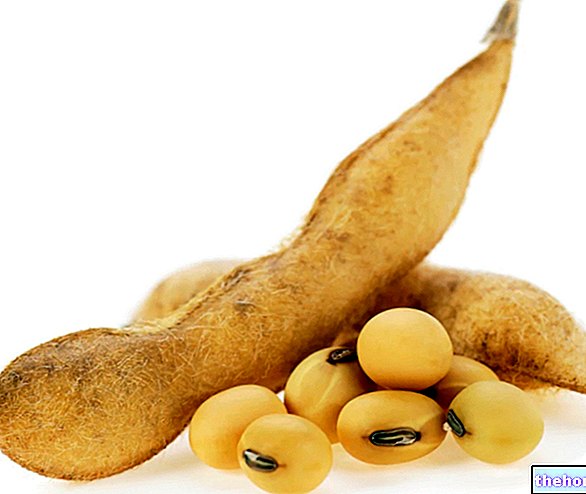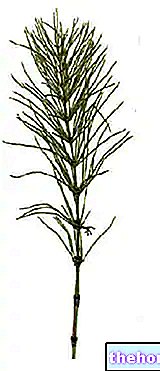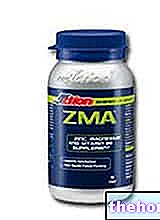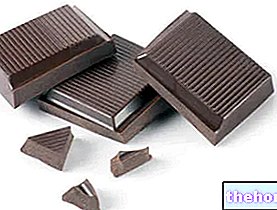
Ananase is an anti-inflammatory drug based on bromelain, a proteolytic enzyme extracted from the pineapple stem. When taken on a full stomach, bromelain facilitates the digestion of dietary proteins, while in fasting it exhibits greater and interesting anti-inflammatory properties.
Ananase is presented in sugared almonds containing 40 mg of bromelain each, indicated for the treatment of edema processes of an inflammatory nature in the medical and surgical fields.
Bromelain was first introduced in therapy in 1957 as an anti-inflammatory, given its ability to block certain pro-inflammatory metabolites that accelerate and worsen the inflammatory process. Currently bromelain is also used as a decongestant for the mucosa of the ororinopharyngeal and rhinosinusal district (ananase can therefore be useful as a complementary treatment of sinusitis, as recommended by the German E commission). Its anti-edema and anti-inflammatory properties make it potentially useful in the presence of musculoskeletal trauma, including sports, and arthritis.
For its anti-edema properties and for some evidence about a possible inhibitory action on the development of thrombi inside the blood vessels, bromelain is sometimes used to combat the manifestations of venous insufficiency of the lower limbs (tired, painful, itchy legs and swollen ankles). For the same reason, bromelain and pineapple stem extracts are used as adjuvants in the treatment of edematous-fibrosclerotic panniculopathies (cellulite). Given its easy availability, some people improperly use pineapple for this purpose, forgetting that despite it being treating an over-the-counter drug, a preventive medical consultation is essential.
Normally used dosages of bromelain are equal to 40-80 mg, three times a day. Specifically, as regards ananase, on the package leaflet we read that "the optimal dosage of attack is one candy, four times a day. A candy 2-3 times a day as maintenance therapy. With the recommendation that the sugared almonds be swallowed whole and possibly on an empty stomach ".
Ananase: side effects, drug interactions and contraindications
The use of bromelain is contraindicated in the presence of peptic ulcer. The label of ananase states that the product is also contraindicated to patients with haemophilia and haemorrhagic diathesis, as well as in the case of severe liver and nephropathies, peptic ulcer and hypersensitivity individual ascertained to the product. Caution, therefore, in the presence of coagulation disorders or any predisposition to bleeding, including cases of hypermemorrhoea. Analogous speech in people allergic to pineapple or to other members of the Bromeliaceae family, as well as to poison of bees, latex, birch pollen, carrot, celery, fennel, cypress pollen, grass pollen, papain, rye flour or wheat flour. interruption of treatment and establishment of suitable therapy. Cases of nausea, vomiting, diarrhea and, rarely, cases of menorrhagia-hypermenorrhea (particularly heavy menstrual flow) and metrorrhagia (bleeding outside the menstrual cycle) have also been reported.
Bromelain and ananase should be used during pregnancy and breastfeeding only in case of real need, and under direct medical supervision. As for the possible drug interactions, on the label of the ananase we note that with antiocoagulant drugs, for the already cited synergistic activity of bromelain. Caution, therefore, in the concomitant use of ananase and coumadin, heparin, antiplatelet agents (clopidogrel - Plavix) or non-steroidal anti-inflammatory drugs, such as ibuprofen and naproxen. For the same reason it is not recommended to combine it with supplements or herbal remedies based on Ginkgo biloba, garlic and serenoa repens.
Furthermore, from a theoretical point of view, ananase could enhance the anti-inflammatory activity of NSAIDs, including that of the common aspirin. Ananase and bromelain may also increase the absorption of some antibiotics, particularly amoxicillin and tetracyclines, by increasing their levels in the body. Some experts suggest that bromelain can cause drowsiness or sedation and enhance that caused by certain medications. Examples are benzodiazepines such as lorazepam (Ativan ®) or diazepam (Valium ®), barbiturates such as phenobarbital, narcotics such as codeine, some antidepressants and alcohol. In case of concomitant intake of ananase, caution is advised while driving or using machinery.
Select plant Fir Acacia Acerola Sorrel Yarrow Yarrow Yarrow Aconito Adatoda Garlic Agnocasto Agrimonia Alchemilla Alkekengi Aloe Altea Witch Hazel Ammi or Visnaga Pineapple Andrographis Anemone Pulsatilla Angelica Anise Star Anise Japanese Star Anise Bitter Orange Bitter Areca Arnica Harpagophytum Arpagophyte Artemisia Asteragus Basil Asparagus Asparagus Peruvian Asparagus Asparagus Asparagus Hawthorn Boldo Borage Shepherd's Purse Boswellia Bucco Butea superba Cocoa Coffee Cajeput Calamus Calamus Marigold Camedrio Chamomile Roman Chamomile Camphor Cinnamon Ceylon Maidenhair Capuchin Artichoke Cardamom Cardiac Thistle Asian Thistle Carvi Cascara Cassia Catecu Catha Cabbage Celandine Chicory Centaurea Cinnamon Cypress Celandine Chives Cypress Coca Cola Colchico Combreto Condurango Comfrey Coriander Cranberry Barberry American Chrysanthemum Cumin Turmeric Damiana Digital Dioscorea Drosera Dulcamara Dunalilella Echinacea Eder a Ephedra Elenio Eleutherococcus Helichrysum Evening primrose Horsetail Alfalfa Erica Euphrasia Erisimo Escolzia Eucalyptus Farfara Farfaraccio Calabar bean Fenugreek Fennel Phytolacca Frangola Ash Fumaria Japanese Mushrooms Galega Ganoderma lucidum Garcinia Cambogia Mulberry Gentian Broom Ginkgo Ginkgo Guipana Guipana Gynestra Ginkgo Hibelia Gymnasium Hibiscus Guarulp St. John's Wort Horse Chestnut Ispaghul Hyssop Jaborandi Kava kava Konjac Laminaria Cherry Laurel Lavender Lemongrass Lespedeza Lovage Icelandic Lichen Lemon Flax Lippia Licorice Lobelia Hops Maca Marjoram Maize Mallow Manna Marrubio Marrubio d "water Matè Melaleuca Meliloto American Lemon balm Myrtle Myrama Walnut Nutmeg Walnut vomica Olive tree Meadowsweet Ononide Opuntia Oregano Orthosiphon Nettle Poppy Papaya Parietaria Feverfew Passiflora Chilli Perilla Periwinkle Phyllanthus Plantain Picrorhiza Pilosella Pino Pisci dia Podofillo Polygala Grapefruit Parsley Psyllium Pueraria mirifica Butcher's broom Pygeum Quassia Oak Rhubarb Ratania Rauwolfia currant Castor bean Rhodiola Rosehip Rosemary Rue Willow Sarsaparilla Sage Elderberry Sassafras Sedum Ergot Senna Serenoa Repens Soybean Solidago Tansy Taraxus Tamarind Tamarind Tamarind Tamarind Tamarindo Ursina Valerian Vanilla Mullein Verbena Veronica Viburnum Vinca Pansy Mistletoe Vine Withania Yohimbe Saffron Ginger Pumpkin Select disease Juvenile Acne Rosacea Tinnitus Tinnitus Aerophagia Tendon Affections Afonia Aphthae Algias Functional Halitosis Breastfeeding Allergy Anemia Anguish Anxiety Arteriosclerosis Asthrosis Asthrosis Arthritis Arthritis Men Sex Woman Blepharitis and Conjunctivitis Eye bags Bronchitis Gallstones Kidney stones Salivary stones Baldness Androgenetic Candida Fragile hair Caries Headache Cellulitis Motion sickness Cystitis C limaterio Cholecystopathy High cholesterol Ulcerative colitis Colonoscopy Contusions Hematoma Convalescence Couperose Depression Dermatitis Diaper dermatitis Diabetes Diarrhea Erectile dysfunction Dyslipidemia Dysmenorrhea Dyspepsia Disturbances of vision Hemorrhoids Epistaxis Herethism Heart disease Fever Fibromyalgia Gastro-intestinal disease Flatulence Hypertension Fibromyalgia Gastrointomnia Jaundice Laryngitis Renal lithiasis Toothache Sore throat Thinness Menopause Meteorism Mononucleosis Alzheimer's disease Crohn's disease Nausea Vomiting Obesity Dark circles Onychomycosis Osteoporosis Dry skin Periarthritis Piorea Low pressure Prostatitis Psoriasis Colds Breast fissures Anal fissures Gastro-nasal rhinitis Senescence Premenstrual Syndrome Sinusitis Quit smoking Overweight Fatty liver Constipation Stomatitis Stress Cough Triglycerides high Ulcer Burns Nails Brittle flashes Heat Warts Dizziness Properties herbal Tanning Abortive adaptogenic Aphrodisiac bittering analgesic anesthetic anorectics analgesic antacid anti-allergic anti-asthmatic Antibiotic catarrh Anticellulitiche anticonvulsant Antidiaforetiche antidiarrheal edematous anthelmintic antiemetic Antiemorroidarie antiphlogistic Antiidrotiche Antinevrotiche Antioxidants antipyretic antirheumatic antiscorbutic Antiseptic antispasmodic anti-uric Aperitive Flavoring Astringent Balsamic Bechiche Capillarotrope Cardiotonic Carminative Cathartic Caustics Healing Cholagogues Choleretic Dyes Decongestants Deodorants Purifying Diaphoretic Cleansers Disinfectants Detoxifiers Thirst quenching Diuretics Exciting Emetics Emmenagogues Emollients Hemostatic Energies Hepatoprotectors Expectorants Eupepticus Moisturisers Galactosensitizers lanti Hypertensive Hypnotic Hypoglycemic Hypotensive Irritants Laxatives Soothing Narcotic Nerves Nutrients Odontalgic Pectoral Purgative Revulsive Remineralizing Refreshing Rubefacient Scialagoghe Sedative Soporifugas Sneezing Stomachic Stomatics Narcotic Vascular Tightenitis




























